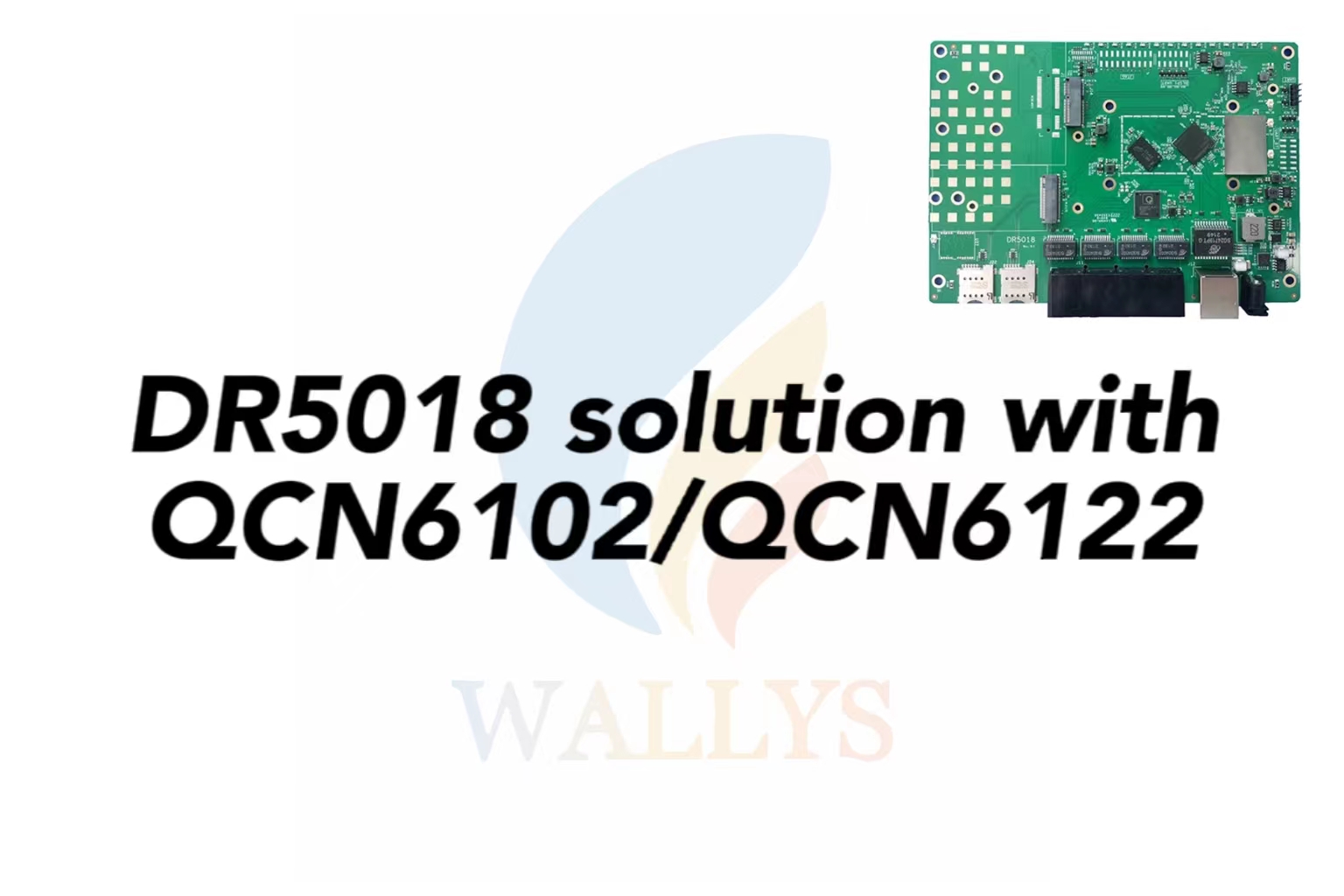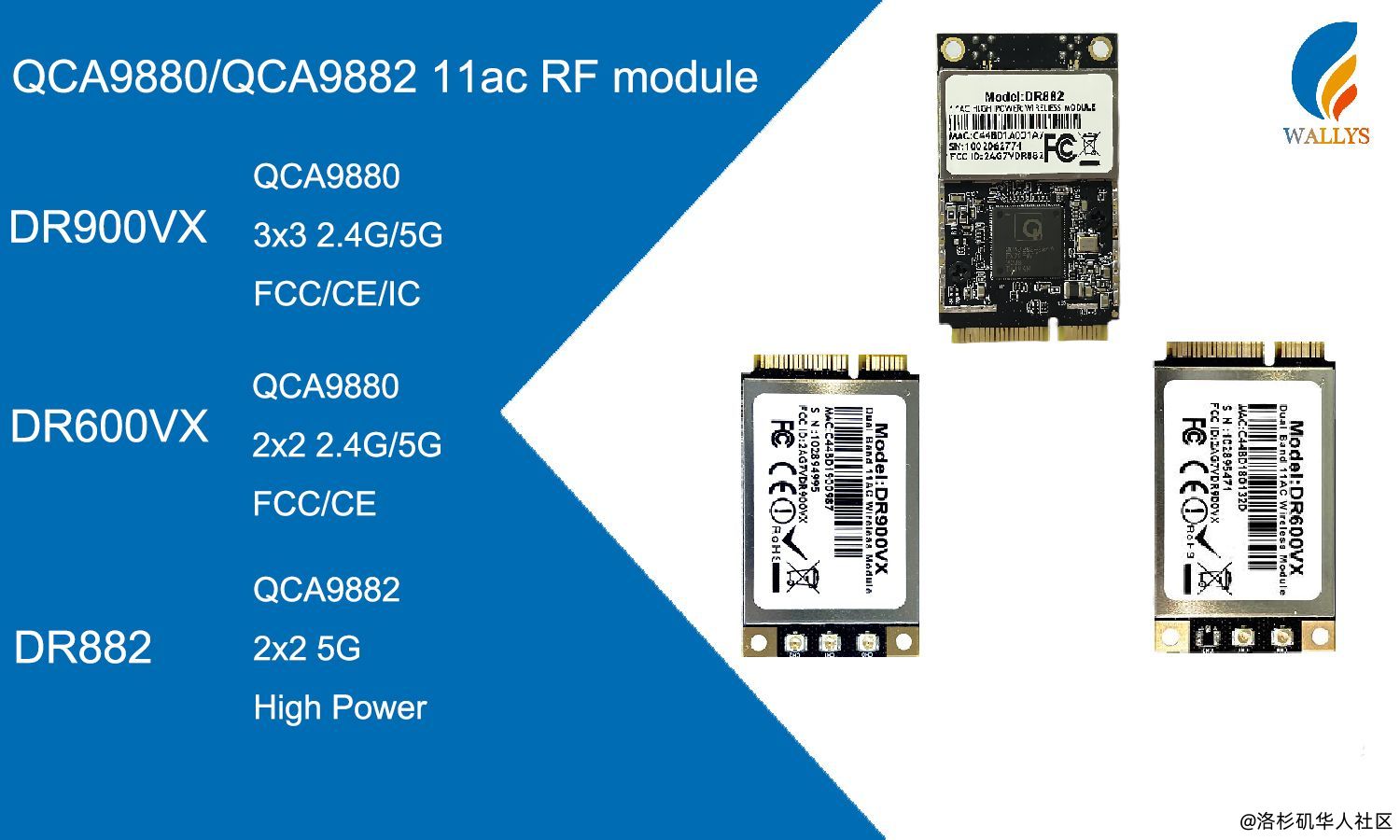802.11s and Easymesh|IPQ5018 CPU Solution|Wallystech DR5018
What is 802.11s?
802.11s is a wireless mesh networking standard that was developed by the IEEE (Institute of Electrical and Electronics Engineers). It is a variant of the 802.11 Wi-Fi standard and is designed to enable wireless devices to connect and communicate with each other in a mesh network.
In a wireless mesh network, devices such as access points, routers, and other wireless devices are interconnected to form a self-configuring network. Each device in the network acts as a node and can communicate with other nodes in the network. This enables wireless devices to connect and communicate with each other even if they are not within range of the main access point.
The 802.11s standard provides a number of features that are specific to mesh networks, including support for multi-hop communication, automatic topology discovery and self-configuration, and efficient routing protocols. It also supports advanced security features such as WPA2 and AES encryption, ensuring that data transmitted over the network is secure.
Overall, 802.11s is a powerful and versatile standard that enables wireless mesh networks to be created easily and efficiently. It is well-suited for a wide range of applications, including large-scale industrial and municipal networks, smart home applications, and public safety networks.
What is Easymesh?
EasyMesh is a Wi-Fi standard developed by the Wi-Fi Alliance that allows for multiple Wi-Fi access points to communicate and work together as a unified network, providing seamless coverage and improved performance for users. It is designed to address the issues of coverage, capacity, and performance in modern home and enterprise networks. With EasyMesh, users can easily add new access points to their network and have them automatically configured to work together without the need for manual configuration. This can help improve the Wi-Fi experience for users by providing better coverage, faster speeds, and reduced network congestion.
What is the difference between easymesh and 802.11s?
EasyMesh and 802.11s are both mesh networking standards that are designed to enable devices to connect and communicate with each other in a self-configuring network. However, there are some key differences between the two standards. Here are some of the advantages and disadvantages of each standard:
EasyMesh:
Advantages:
EasyMesh is an industry-standard developed by the Wi-Fi Alliance, which means it has broad industry support.
l It supports interoperability between different vendors' devices, making it easier to create a mesh network with devices from different manufacturers.
l It supports easy network management through the use of a central controller or cloud-based management system.
l It is designed to work with existing Wi-Fi standards such as 802.11ac and 802.11ax (Wi-Fi 6).
Disadvantages:
EasyMesh does not support multi-hop communication, which means that each device in the network must be within range of the main access point.
l It may require more processing power and memory than other mesh networking standards, which could limit its use in low-power devices.
l It is a relatively new standard, which means that it may not be supported by all devices and systems yet.
802.11s:
Advantages:
802.11s is an established standard that has been around for many years, which means that it has broad industry support and is widely implemented.
l It supports multi-hop communication, which means that devices can communicate with each other even if they are not within range of the main access point.
l It is designed to be low-power and efficient, which makes it well-suited for use in battery-powered devices.
l It supports advanced security features such as WPA2 and AES encryption.
Disadvantages:
802.11s does not have the same level of interoperability between different vendors' devices as EasyMesh.
l It can be more difficult to manage and configure than EasyMesh, as it requires more manual configuration and setup.
l It is designed to work with older Wi-Fi standards such as 802.11b/g/n, which may limit its performance compared to newer standards such as 802.11ax.
Overall, both EasyMesh and 802.11s have their advantages and disadvantages, and the choice of which standard to use will depend on the specific requirements of the application. EasyMesh is a good choice for those who need interoperability between different vendors' devices and easy network management, while 802.11s is a good choice for those who need multi-hop communication and low-power efficiency.
When should i choose Easymesh?When should i choose 802.11s?
The choice between EasyMesh and 802.11s will depend on the specific requirements of the application. Here are some examples of when each standard might be a better choice:
EasyMesh:
Interoperability is important: EasyMesh is designed to be an industry-standard that supports interoperability between different vendors' devices. If you need to create a mesh network with devices from different manufacturers, EasyMesh may be a better choice than 802.11s.
Easy network management is important: EasyMesh supports easy network management through the use of a central controller or cloud-based management system. If you need to manage and configure the network easily, EasyMesh may be a better choice.
Compatibility with newer Wi-Fi standards is important: EasyMesh is designed to work with newer Wi-Fi standards such as 802.11ax (Wi-Fi 6). If you need to take advantage of the latest Wi-Fi technologies, EasyMesh may be a better choice.
802.11s:
Multi-hop communication is important: 802.11s supports multi-hop communication, which means that devices can communicate with each other even if they are not within range of the main access point. If you need to create a network that covers a large area or has obstacles that may block the signal, 802.11s may be a better choice than EasyMesh.
Low-power efficiency is important: 802.11s is designed to be low-power and efficient, which makes it well-suited for use in battery-powered devices. If you need to create a network with low-power devices, 802.11s may be a better choice.
Compatibility with older Wi-Fi standards is important: 802.11s is designed to work with older Wi-Fi standards such as 802.11b/g/n. If you have older devices that are not compatible with newer Wi-Fi standards, 802.11s may be a better choice than EasyMesh.
In summary, the choice between EasyMesh and 802.11s will depend on factors such as interoperability, network management, multi-hop communication, power efficiency, and compatibility with different Wi-Fi standards. It is important to evaluate the specific requirements of your application before choosing a mesh networking standard.
802.11s Developing routerboards
DR5018 is a high-performance routerboard design for developing 802.11s mesh network applications. It is powered by the Qualcomm IPQ5018 chipset and supports 802.11ax (Wi-Fi 6) technology, providing users with an efficient and reliable wireless experience.
DR5018 features 2×2 MIMO technology and supports MU-MIMO, OFDMA, and 1024-QAM modulation, allowing it to provide fast and stable wireless connections. It has two 2.5G Ethernet ports, one USB 3.0 port, and one mini PCIe slot, providing users with flexible connectivity options.
With its powerful hardware and software capabilities, DR5018 is an excellent choice for developing 802.11s mesh network applications. It is also highly customizable and can be tailored to meet the specific needs of different applications and scenarios.
At Wallystech,we are dedicated to providing our customers with high-quality and innovative wireless solutions. With over 10 years of experience in Qualcomm-Atheros chip research and development, we have the expertise to optimize drivers, develop special protocols, and improve wireless stability. Our products, including the DR6018, DR5018, and DR8072, are designed to meet the specific needs of our clients, while our technical support team is always available to assist with any issues that may arise. We are committed to staying at the forefront of wireless technology and look forward to continuing to provide cutting-edge solutions for our partners and customers.
Email:sales1@wallystech.com
Website:https://www.wallystech.com/





































